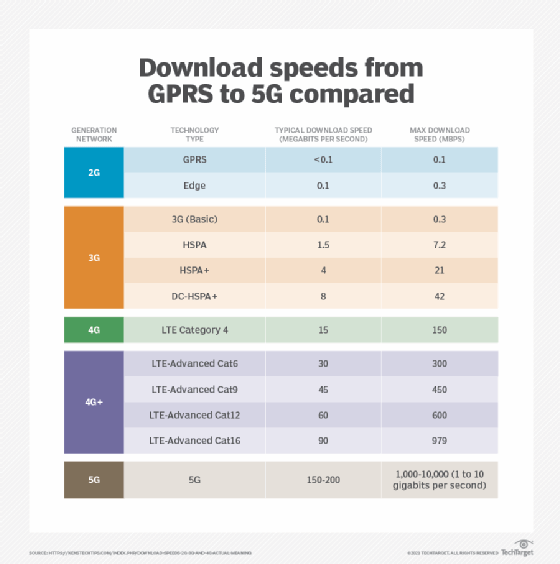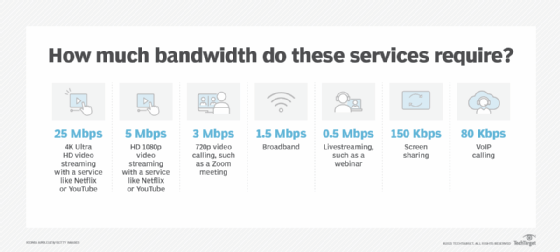bits per second (bps or bit/sec)
What are bits per second (bps or bit/sec)?
In data communications, bits per second (bps or bit/sec) is a common measure of data speed for computer Modems and transmission carriers. As the term implies, the speed in bps is equal to the number of bits transmitted or received each second.
Bits per second are a unit of measurement within the larger bit rate, otherwise known as bitrate or as a variable R, which is the number of bits processed per unit of time. The fields of data communications, telecommunications and computer science most commonly use these terms.
Larger units are sometimes used to denote higher data speeds. One kilobit per second is equal to 1,000 bps, while 1 megabit per second (Mbps) equals 1,000,000 bps or 1,000 Kbps.
What is the difference between bit rate and baud rate?
The communications industry used to specify data speed in terms of baud, which is a measure of the number of times a digital signal changes state in 1 second.
Baud, sometimes called the baud rate, is usually a lower figure than bps for a given digital signal. This is because signal modulation techniques enable the transmission of more than 1 bit of data per change state.
Today, we use bit rate to measure the number of bits processed in a unit of time.
Bits per second unit prefixes
When quantifying bits per second, prefixes are used to indicate the full bit rate. The International Organization for Standardization's International Electrotechnical Commission 80000-13 standard provides the various abbreviations for binary or decimal prefixes.
Here are a few of the most common prefixes and their meanings:
- 1,000 bps = 1 Kbps;
- 1,000,000 bps = 1 Mbps;
- 1,000,000,000 bps = 1 Gigabit per second (Gbps); and
- 1,000,000,000,000 bps = 1 terabit per second (Tbps).
What is the difference between bits and bytes?
Bits are most often used for measuring data speeds, such as internet connection speed, as well as download or upload speed. Bytes, on the other hand, are typically used to measure file storage size -- i.e., a software-as-a-service subscription that comes with 10 gigabytes of storage.
Common data transfer rates in bits per second
The computer and communications industries divide data transfer rates into two classes: dial-up and Broadband.
- Dial-up connections occur through a wired telephone line and usually operate at a rate of 57.6 Kbps. However, these data transmission systems are now mostly obsolete as a large portion of the public no longer uses landline phones.
- Broadband connections refer to any form of high-speed internet connection that isn't dial-up.
- Digital Subscriber Line download speeds range from 3 Mbps to 50 Mbps;
- Cable modems operate at an average rate of 10 Mbps to 500+ Mbps;
- Satellite internet ranges from 12 Mbps to 100 Mbps;
- Fixed wireless varies between 5 Mbps and 50 Mbps; and
- Fiber optic averages from about 250 Mbps to as high as 2+ Gbps.
Cellular wireless download speeds, meanwhile, are dependent on the wireless network generation. For example, today's 5G networks are starting out at typical downloads speeds between 150 Mbps and 200 Mbps -- far faster than the fastest 4G technology -- and max out at 1 Gbps. Their theoretical maximum is 10 Gbps, however.

Internet connection speeds
Beyond speed, bandwidth is also a concern in data transfer and internet speeds, particularly as they relate to Wi-Fi connections. While speed refers to how fast data can be transmitted over a determined path, bandwidth -- by contrast -- refers to the path's capacity to support that data speed.
Think of how fast water moves through a pipe as speed and the amount of water that can travel through the pipe at that speed for a given time period as bandwidth.

The bandwidth of a signal depends, as with speed, on bits per second. With some exceptions, the higher the bps number, the greater the nominal signal bandwidth and the better the connection for internet-connected devices.








